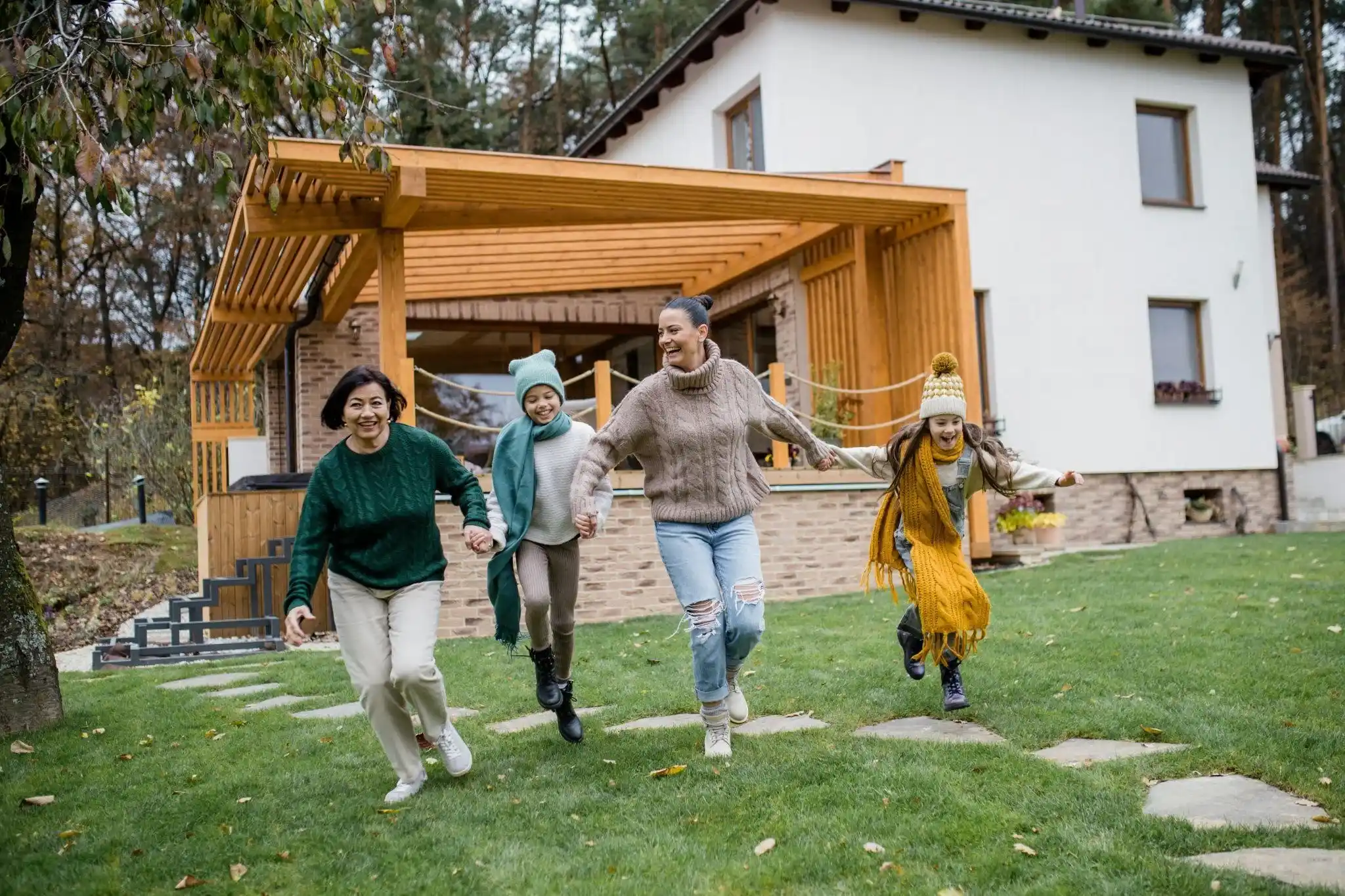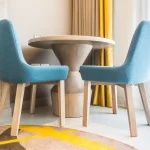- Smart layouts can help families with differing needs live together more harmoniously
- Zoning, multi-use spaces, and privacy-focused design enhance daily life in shared homes
- Future-proofing a layout allows homes to adapt to changing family dynamics
- Thoughtful design supports emotional well-being as much as practical function
Once upon a time, the idea of a single-family household was simple. You had a nuclear family, a couple of bedrooms, and maybe an extension or two. But today’s family life is far more layered. Whether adult children return after university, grandparents move in to be closer to the grandkids, or blended families try to merge routines and habits, the definition of “home” is constantly evolving.
And with that evolution comes a growing need to rethink how we live together. Traditional floor plans often fall short when trying to balance privacy with connection. Maybe you need a quiet place for your morning coffee that doesn’t clash with someone else’s pre-work gym session in the living room. Or perhaps you’re dreaming of a guest space that doubles as a mini flat for an ageing parent.
That’s where smart layouts come in. When designed thoughtfully, they can bring structure to chaos and harmony to even the most complex family arrangements. This blog explores how these layouts can work, especially when sharing space but living very different lives.
Understanding the Needs of Diverse Households
If you’ve ever lived with family members with wildly different schedules, lifestyles, or expectations, you’ll know it’s not just about the number of rooms—it’s about how those rooms work. The modern household isn’t one-size-fits-all anymore. It’s more like a collage of individual routines stitched together by shared values and a common address.
You might have an elderly parent who needs quiet, accessible spaces. Meanwhile, your teenager thrives in a social setting with their mates around. Then there’s you, perhaps trying to run a remote business from a corner of the house. Everyone has their own rhythm, and the layout of your home needs to flex around those differences.
Designing for this variety means shifting the focus from square metres to spatial purpose. It’s not about bigger; it’s about better use. Think less about cramming in extra bedrooms, and more about creating separation where needed most—whether that’s soundproofing, visual privacy, or different entry points.
For instance, you may want a kitchen that serves as a central hub during meals but a sitting room that offers actual downtime for just one part of the family. It’s this push-and-pull between connection and autonomy that makes thoughtful design so essential for today’s shared living.
How Architects Are Responding to Modern Living Needs
In response to these shifting dynamics, architects and designers are reimagining what homes can be. The days of rigid floor plans give way to layouts prioritising function, flow, and flexibility. And this isn’t just about knocking down a wall or adding a second bathroom. It’s about designing homes from the ground up that reflect how people live.
One growing trend is the move toward designs that allow multiple generations to live together without sacrificing privacy. These layouts often feature elements like separate living quarters, dual kitchens, or private outdoor areas that can be shared—or not—depending on the moment.
That’s where dual occupancy home designs for modern families start to shine. They’re not just clever use of space—they’re a recognition that one household can meet several needs simultaneously. With carefully planned zones, shared areas become intentional gathering points rather than chaotic intersections. And when privacy is needed, it’s truly there, not a curtain or flimsy divider pretending to do the job.
Some of these designs even incorporate completely separate entrances or self-contained wings, making it possible for two branches of a family to live side-by-side with the flexibility to interact—or retreat—at their own pace. This kind of layout also opens doors for future adaptability. A space that begins as a teenage flat might later transform into a rental suite or accessible unit for an ageing parent.
What’s exciting is that these solutions don’t have to be massive or extravagant. Even modest homes can benefit from thoughtful dual-use planning. The key is working with someone who understands that modern family life doesn’t always follow a straight line—and your home shouldn’t have to either.
Room by Room – Smart Solutions That Make a Difference
Creating a functional shared home isn’t about throwing money at high-end features or doubling the floor plan. It’s about being intentional with how each room serves your family’s daily life. The best layouts feel almost invisible—they just work. You overlook the genius behind them because everything fits together naturally, like a well-rehearsed dance.
Let’s start with zoning. It might sound technical, but it’s simply the art of organising your home so that loud and quiet activities don’t clash. Bedrooms placed away from busy living areas, for example, mean someone can take a midday nap while the rest of the household carries on. Sliding doors or internal glass walls with acoustic treatments can be game-changers in open-plan homes, allowing for separation without sacrificing natural light.
Kitchens and bathrooms are another area where clever design makes a real difference. Dual sinks in the bathroom let two people get ready at once without elbowing each other out of the way. A butler’s pantry or second prep area in the kitchen can ease morning chaos when everyone’s trying to grab breakfast simultaneously. Even the humble hallway can be optimised to avoid that awkward “who’s walking where” shuffle during busy hours.
Multi-use rooms are another secret weapon. In seconds, a spare room with a wall bed can transform from a guest suite to a home office. A media room can double as a quiet retreat or a workspace with the right furniture. These aren’t gimmicks—they’re practical responses to living in a home that serves multiple generations and lifestyles.
And then there’s storage. Never underestimate the power of clever storage. These features keep shared spaces looking clean and functioning smoothly, from under-stair cupboards to built-in cabinetry. When everyone has a place to stash their stuff, tempers stay lower and the house runs better. It’s that simple.
The Emotional Architecture of Home
It’s easy to talk about layouts in terms of function, but let’s not forget: your home has a soul. It’s more than bricks, insulation, and floor tiles. It’s the place where people connect—or clash. And how a home is laid out can profoundly influence how those moments play out.
Tensions can build up quickly when families live together but lead different lives. Maybe someone feels like they’ve lost their sense of space, and perhaps another person never quite feels welcome in the “shared” areas. Good design can’t fix every emotional wrinkle, but it can help prevent a few.
Take something as simple as a personal retreat space. A small reading nook with a closed door can give someone just enough solitude to reset. A well-placed bench in a sunlit corner might become a regular spot for a grandparent to relax and feel included without being in the thick of things. These little touches matter.
Even shared spaces can carry emotional weight. A dining area that comfortably fits everyone, without squeezing or juggling chairs, creates a sense of belonging. A living room where no one’s stuck in the “bad seat” makes gatherings more relaxed and inclusive. These aren’t luxuries; they’re the building blocks of connection.
The stories we hear from families who’ve embraced smart layouts often centre around how the space improved their relationships. Less noise means fewer arguments. Thoughtful transitions between private and public zones give everyone the freedom to interact on their own terms. One couple even said that creating a dual-entry design helped their teenager gain a sense of independence without leaving the nest entirely—a win for both sides.
In short, when a home supports your emotional and logistical needs, something shifts. Daily life becomes smoother. Relationships breathe a little easier. And the house itself stops being just a container for your family—it starts to feel like a co-pilot.
Future-Proofing Your Home Design
Designing a home that fits your family today is one thing, but what about ten years from now? One of the smartest moves you can make when planning your layout is to think beyond your current situation. Flexibility isn’t just about handling different routines; it’s about preparing your home to adapt as your needs change.
Maybe your kids are young now, but soon, they’ll want their own space and more autonomy. Perhaps your parents are still independent but may eventually need step-free access and more support. Or maybe you’re simply thinking ahead to renting out part of your home to create extra income. These scenarios call for a layout that can grow with you, not against you.
Start with the bones of your home. Can a garage be converted into a private studio later on? Can a corridor be widened or a stairlift added down the line? If you’re renovating, can you install plumbing where a kitchenette might go in the future, even if you don’t need it now?
It also pays to consider how you’ll work with your architect or builder. Be upfront about your long-term plans. Good professionals will guide you toward solutions that keep your options open without overcomplicating things. Ask questions like: How easy will it be to modify this room later? Can this space serve more than one function over time?
Sustainability is part of the conversation, too. Homes designed with energy efficiency in mind not only lower bills but also reduce the environmental impact of expanding households. Double-glazed windows, solar panels, and smart heating systems aren’t just nice to have—they’re investments in a resilient, future-ready home.
In the end, the goal is to design with intention. A home that adapts is a home that lasts. And if it supports your family through every stage—without constant reinvention—you know you’ve got something that’s not just smart, but truly sustainable.
Conclusion: Designing for Harmony and Independence
When families live under one roof, balancing togetherness with personal space isn’t always easy. But your home can make that balance feel natural with the correct layout. It’s not about choosing between open-plan living or shutting everyone away behind closed doors. It’s about creating a space that reflects the people in it, each with their rhythms, needs, and quirks.
The most successful homes are those that support both independence and connection. They make room for quiet mornings, lively dinners, private downtime, and shared experiences. And most importantly, they evolve as your family does.
So, whether you’re building from scratch, renovating, or simply rethinking your current setup, remember: thoughtful design isn’t about perfection. It’s about making space for the life you live—and the people you live it with.










